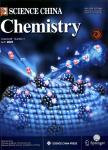版权所有:内蒙古大学图书馆 技术提供:维普资讯• 智图
内蒙古自治区呼和浩特市赛罕区大学西街235号 邮编: 010021

作者机构:1. Shenzhen Graduate School of Peking University Shenzhen 518055 China 2. State Joint Key Laboratory of Environmental Simulation and Pollution Control College of Environmental Sciences Peking University Beijing 100871 China
出 版 物:《Science China Chemistry》 (中国科学(化学英文版))
年 卷 期:2006年第49卷第5期
页 面:466-474页
核心收录:
学科分类:07[理学] 070602[理学-大气物理学与大气环境] 0706[理学-大气科学]
基 金:This work was supported by the National Natural Science Foundation of China (Grant Nos. 20420130348 & 4049036) the National Basic Research Program (Grant No. 2002CB211605) from Ministry of Science & Technology, China Guangdong Natural Science Foundation,China (Grant No.04300640)
主 题:PM2.5, mass concentration, secondary pollution, seasonal variation, Shenzhen.
摘 要:Two field measurements for atmospheric fine particles were conducted in Baoan district of Shenzhen during the summer and winter in 2004. Totally 30 sets of 24 h samples were collected, and then the mass concentrations and chemical compositions were determined. The seasonal varia- tions and secondary pollution characteristics of fine particles during the sampling periods were dis-cussed with meteorological factors. The results show that seasonal variations of atmospheric particles are significant in Shenzhen. The average mass concentrations of PM2.5 and PM10 in summer were 35 μg·m-3 and 57 μg·m-3, respectively, and those in winter were 99 μg·m-3 and 135 μg·m-3, respec-tively. The concentrations of both PM2.5 and PM10 in winter increased 184% and 137%, respectively, compared to those in summer. PM2.5 accounted for 61% and 75% of PM10 in summer and in winter, respectively, indicating severe fine particle pollution in Shenzhen. During the summer and winter sampling periods, the mean OC/EC ratios were 3.4 and 1.6, respectively. The estimated secondary organic carbon (SOC) averagely accounted for 56% and 6% of the total OC in summer and in winter, respectively, which implies a major contribution of SOC to OC in summer. During the continuous high temperature period in summer, both the concentrations and fractions of secondary aerosol compo-nents in PM2.5 were highly elevated, suggesting severe secondary pollution again. The prevailing wind was from South China Sea in summer, and the air quality was good. The prevailing wind in winter was from China s Mainland to the north, and the polluted air mass led to poor air quality.